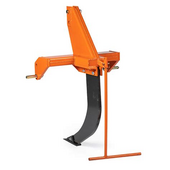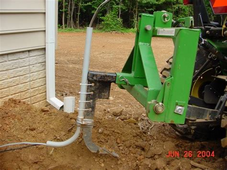KevinC_63559
Solar Enthusiast
Hi -
Solar panels are on order, MPPT charge controllers installed, mounting frames backordered...
Seemed like a good time to ask for some practical advice!
I'd like to bury my PV cables about 6-12 inches deep. Suspect 6 would be just fine. Nobody in a 50 mile radius rents trenchers... downside of being rural.
Looking for suggestions on how to dig a 6 inch trench through both ground and a gravel driveway. Not really looking forward to having to do 100+ feet with a pickaxe!
Any suggestions?
I have a full size tractor, but that would limit how close I could get to buildings.
Also: is grey PVC acceptable for running the 10 gauge wires through? No rules out here, upside of being rural - but don't want to do anything stupid either.
Solar panels are on order, MPPT charge controllers installed, mounting frames backordered...
Seemed like a good time to ask for some practical advice!
I'd like to bury my PV cables about 6-12 inches deep. Suspect 6 would be just fine. Nobody in a 50 mile radius rents trenchers... downside of being rural.
Looking for suggestions on how to dig a 6 inch trench through both ground and a gravel driveway. Not really looking forward to having to do 100+ feet with a pickaxe!
Any suggestions?
I have a full size tractor, but that would limit how close I could get to buildings.
Also: is grey PVC acceptable for running the 10 gauge wires through? No rules out here, upside of being rural - but don't want to do anything stupid either.




